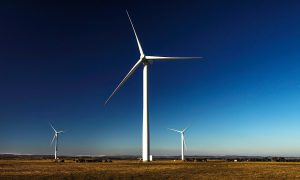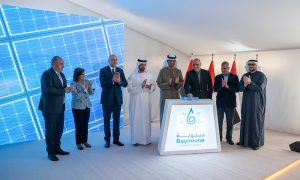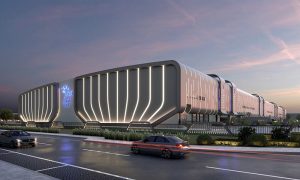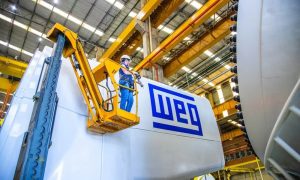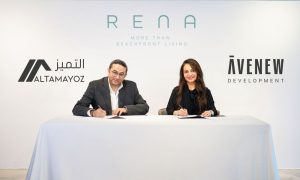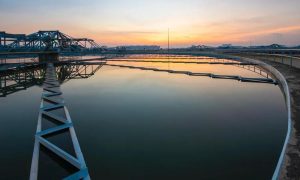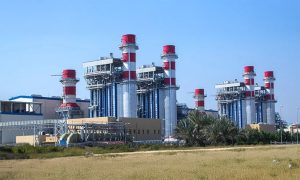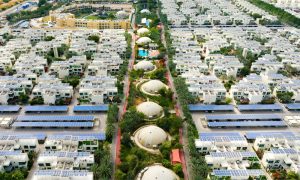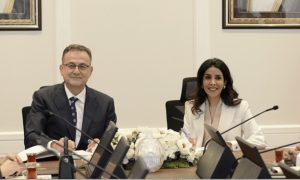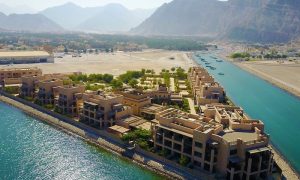Project profile: Shams Ma’an solar plant, Jordan
Big Project ME speaks to First Solar, the EPC contractor of the largest PV plant in the Middle East

Earlier this year, First Solar, an American-owned photovoltaic solar energy solutions provider, announced that it had commissioned the 52.5MW Shams Ma’an project in the Kingdom of Jordan.
With the project owned by a consortium of investors consisting of Diamond Generating Europe, Nebras Power QSC and the Kawar Group, the plant accounts for approximately 1% of Jordan’s total energy generation capacity. Shams Ma’an currently has a 20-year Power Purchase Agreement (PPA) with the National Electric Power Company (NEPCO), Jordan’s power generation and distribution authority.
First Solar significantly contributed to the development of the project before divesting its stake and being appointed as the Engineering, Procurement and Construction contractor.
The plant produces clean electricity through the use of more than 600,000 high-performance thin film modules provided by First Solar, which deliver up to 5% more specific energy in Ma’an than conventional crystalline silicon panels, it says. The modules themselves are mounted on single-axis trackers that allow the facility to generate up to 20% more energy.
First Solar constructed the facility with a workforce that was almost entirely Jordanian, with the company spending more than 40,000 man-hours on training alone, which had the by-product of creating a new skills resource for the country.
With the plant now up and running, First Solar’s Dr Raed Bkayrat, vice president, Business Development, Middle East, sat down for a chat with Big Project Middle East to discuss the construction and development of the plant and the impact it will have on Jordan’s energy grid, while also examining the wider implications of its success for the Middle East’s renewable energy quest.
What did you face as EPC contractor during the construction of the project?
Building a power plant in a new market always presents its own challenges. The biggest challenge we faced was the absence of a technical knowledge base in Jordan and we addressed this by investing in over 40,000 man hours of training. I’m proud to say that, as a result of Shams Ma’an, Jordan now has a valuable pool of personnel that are experienced in building utility-scale solar in the country.
Can you talk about some of the technology used on the project? How has it improved performance and durability, compared to existing technology in the market?
Shams Ma’an produces clean electricity using over 600,000 high-performance First Solar Series 4 thin film modules, which deliver up to 5% more specific energy in Ma’an than other crystalline silicon panels. These panels possess a superior temperature coefficient and spectral response, resulting in greater energy yield in typical field operating temperatures and a proven energy yield advantage in humid environments.
In addition to this, Shams Ma’an is the first PV project in the region to feature the use of the First Solar Tracker, which allows the plant to generate up to 20% more energy.
What are the biggest challenges around the operation and maintenance of the plant? How is First Solar addressing them?
The primary challenge that projects in the region face is the impact of soiling on the modules. While First Solar’s thin film modules offer a superior spectral response which minimises the impact of soiling when compared to crystalline silicon panels, our solar power plants in the Middle East still require a cleaning regime.
The Shams Ma’an power plant is being cleaned using dry brushes mounted on a trolley that is manually guided across the arrays. This is a method we piloted with the 13MW first phase of the Mohammed bin Rashid Al Maktoum Solar Park, and it has been tremendously successful in lowering the impact of soiling on energy production without using water.
Other challenges typically posed by the region include the ability of PV panels to withstand the rugged conditions that they operate in. Shams Ma’an, however, uses First Solar Series 4 modules that have been independently certified for reliable performance in high temperature, high humidity, extreme desert and coastal environments.
These are among the toughest PV modules available and one of a select few that have successfully passed the Atlas 25+ durability test, which is the gold standard for PV module durability.
How much of an impact will the project have on Jordan’s energy needs and production?
The development of Shams Ma’an, and other renewable projects like it, keeps Jordan on track to achieve its energy generation objectives. The Kingdom has historically relied on imports to address its energy needs, as it does not possess large fossil fuel reserves, unlike its regional counterparts.
In fact, recent reports indicate that an estimated 97% of the Jordan’s energy is imported, accounting for a big percentage of the annual government budget – budget allocations that could be spent elsewhere. Also worth mentioning is the regional instability and the repercussions that accompany it – this has not only affected energy supply from neighbours like Egypt and Iraq, it has also increased Jordan’s refugee population, and thus its energy demand.
The development of projects like Shams Ma’an reduces the Kingdom’s dependence on foreign hydrocarbons, with solar power being a sustainable locally sourced alternative, given Jordan boasts one of the highest rates of solar irradiation worldwide.
The facility is the largest operating PV solar power plant in the region and is silently generating enough clean electricity to power 35,000 average Jordanian homes. The plant will also reduce Jordan’s carbon footprint by displacing approximately 90,000 metric tons of carbon dioxide (CO2) per year, equivalent to removing about 20,000 cars from its roads.
The development of Shams Ma’an also contributes to the Kingdom’s energy goals in a different way. Shams Ma’an is considered a project that was built for Jordan by Jordanians, as the core team was made up of Jordanians, as were the 600 workers that were on-site at the peak of its construction. Additionally, a number of workers were locally hired from the region of Ma’an.
Prior to working on the plant, these employees lacked any experience in the solar industry, but by the time it was completed, First Solar had invested 40,000 man-hours in the training of its workforce, thereby equipping its Jordanian workforce with a valuable set of skills.
As a result, due to First Solar’s investment in the professional development of its employees, these citizens are now well positioned to play a role in their government’s ambitious efforts to achieve energy security through renewable energy.
Finally, what is First Solar’s view of the energy market in the MENA region?
We foresee bright futures for the renewable energy market here in the MENA region. We are now seeing investments in solar energy being made as a genuine way of addressing the increasing energy needs plaguing the region, as opposed to just a means of complying with eco-friendly legislation. Solar energy’s proven reliability and sensible economics are driving countries like the UAE to lead the way with investments in clean energy.
In fact, the emirates of Abu Dhabi and Dubai are leading the energy transition with innovative policies designed to encourage renewables in general and solar in particular. We’re also witnessing a growing momentum in the Kingdom of Saudi Arabia, which just announced a revised target of 9.5GW as part of its Vision 2030 plan.
When you take into account that these initiatives are being taken by countries rich in fossil fuels, it only reinforces the fact that sunlight has truly come of age as a reliable and affordable energy source, capable of standing shoulder to shoulder with conventional power generators.
We believe that the industry’s continued success will stem from its technology and innovation capabilities, combined with global expertise and the local insight that can be provided to clients – qualities we take great pride in at First Solar.


